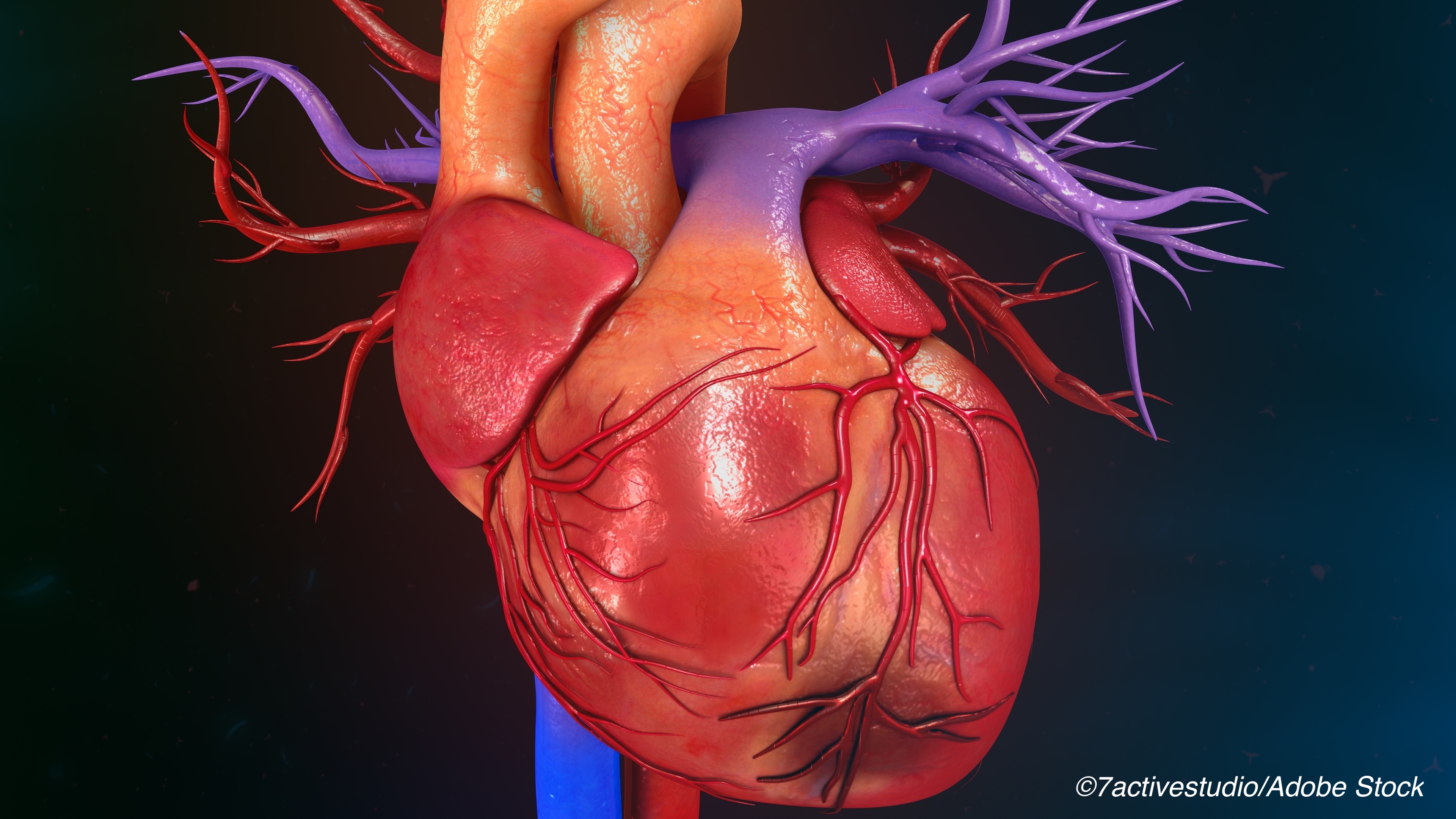Patients with previous myocardial infarction (MI) who are also diagnosed with lung and cardiac deficiencies do not appear to gain an advantage from treatment with sacubitril/valsartan compared with ramipril in preventing further cardiac deterioration, researchers reported.
After a follow-up of 23 months, 338 primary endpoint events occurred among 2,830 patients taking sacubitril/valsartan (an angiotensin receptor-neprilysin inhibitor), compared with 373 events among the 2,831 patients who were assigned ramipril (an ACE inhibitor) in the Prospective ARNI versus ACE inhibitor trial to DetermIne Superiority in reducing heart failure Events after Myocardial Infarction (PARADISE-MI) study, reported Mark Pfeffer, MD, professor of medicine at Harvard Medical School, Boston.
This translated to a decrease of 10% in the relative risk of experiencing the primary endpoint—the composite of cardiovascular death, heart failure hospitalization, outpatient development of heart failure—which was not significant (P=0.17), Pfeffer said at the virtual 2021 meeting of the American College of Cardiology.
All the individual components of the primary endpoint favored treatment with sacubitril/valsartan, but none of those individually achieved statistical significance either:
- Cardiovascular death occurred in 5.9% of the patients who were on sacubitril/valsartan, compared with 6.7% of the patients on ramipril (P=0.20).
- Hospitalization for heart failure was required in 6% of the sacubitril/valsartan patients, compared with 6.9% of the ramipril patients (P=0.17).
- Outpatient heart failure was diagnosed in 1.4% of the sacubitril/valsartan patients, compared with 2% of the ramipril patients (P=0.07).
The story was similar for prespecified subgroups, in which treatment with sacubitril/valsartan was better numerically, but none of the differences were statistically significant, except in patients who were over age 65 and those who had received a percutaneous cardiac intervention at baseline.
Pfeffer told BreakingMED that the trial was enriched with patients who had been diagnosed with diabetes, but there was scant difference in the outcomes in that subgroup (HR 0.99 [95% CI 0.80-1.21]).
“There were 23 subgroups that were analyzed, and in two of them, it seemed better to be in the sacubitril/valsartan group, but in none of them was it better to be in the ramipril arm,” he said. “I didn’t see anything that would change the therapeutic whether or not you had diabetes. I haven’t pursued subgroups in a balanced fashion with control for other factors. Overall the subgroups showed homogeneous responses.”
In commenting on the study, Mary Norine Walsh, MD, director of the heart failure and cardiac transplantation programs and director of nuclear cardiology at St. Vincent Heart Center in Indianapolis, and a past president of the American College of Cardiology, said, “This is exceedingly reassuring data on the growing use of sacubitril/valsartan in our patients. We have been using it in heart failure patients for a different primary outcome than in this trial, thinking we could improve patients with left ventricular dysfunction post myocardial infarction.
“What is reassuring is there was no signal of harm in PARADISE with the use of sacubitril/valsartan, and there was some evidence in exploratory endpoints of benefit,” she said.
She said she would encourage Pfeffer and colleagues to continue to pursue their work. Use of sacubitril/valsartan is hampered by difficulty in getting third party payors to approve use of the agent, even in heart failure where is has been granted regulatory approval, Walsh added.
“The prior authorization process is unbelievable,” she said, “and for some of our patients, they have no access unless they pay fully. That is an important real-world problem we face with this extraordinary therapy.”
In PARADISE, patients were randomized to receive either sacubitril/valsartan (97/103 mg twice daily) or ramipril (5 mg twice daily). They were enrolled from 41 countries, and included 455 patients from the U.S.
Researchers recruited patients who had experienced an acute MI within 7 days of the entering the trial, who had glomerular filtration rates of <60 and a left ventricular ejection fraction of <30%, as well as pulmonary congestion.
Pfeffer reported that adverse events among the trial participants were similar between groups. More hypotension was observed in the sacubitril/valsartan patients compared with the ramipril patients (28.4% vs 22%, respectively; P<0.05). There were more cough complaints in the ramipril patients than in the sacubitril/valsartan patients (13.1% vs 9%; P<0.05); liver abnormalities were observed in 5.9% of the ramipril patients and in 4.7% of the patients on sacubitril/valsartan (P<0.05).
-
Sacubitril/valsartan offered no statistically significant benefit to patients with lung congestion following acute myocardial infarction compared to ramipril.
-
There were no signals that treatment with sacubitril/valsartan caused any harm to patients when compared with ramipril.
Edward Susman, Contributing Writer, BreakingMED™
Pfeffer disclosed relationships with AstraZeneca Pharmaceuticals, Boehringer Ingelheim-Lilly, Corvidia, DalCor, GlaxoSmithKline, Novartis, Novo Nordisk Inc., Peerbridge, and Sanofi-Aventis.
Walsh disclosed relationships with EBR Systems.
Cat ID: 168
Topic ID: 98,168,728,791,730,103,3,308,358,914,13,187,192,925,168



Create Post
Twitter/X Preview
Logout